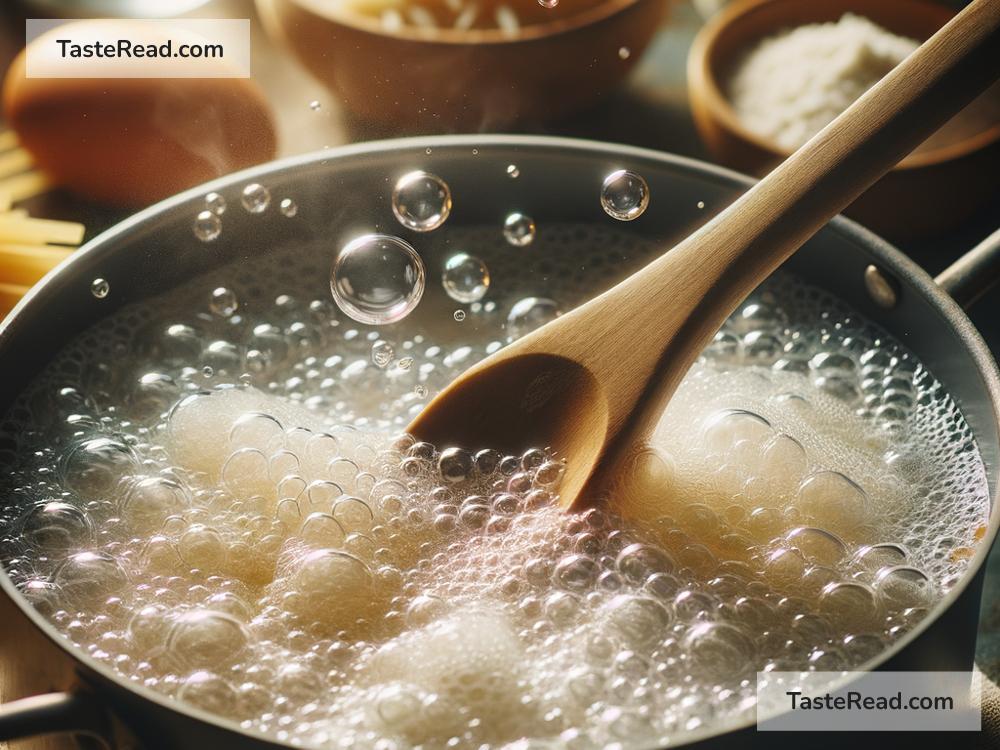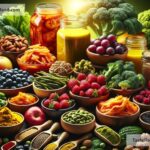The Science of Gelatinization in Cooking: What It Is and Why It Matters
Have you ever wondered why rice turns soft when cooked, or why sauces thicken when flour is added? The answer lies in a fascinating process known as gelatinization. Though the word might sound complicated, the concept is quite simple—and it’s something many of us witness in the kitchen every day without realizing it. Let’s dive into the science of gelatinization and discover why it’s such an important part of cooking.
What Is Gelatinization?
Gelatinization is a process that occurs when starch granules (which are found in foods like rice, wheat, potatoes, and corn) are heated with water. Starch is a carbohydrate made up of tiny particles that are tightly packed together inside granules. These granules act like tiny storage units, keeping the starch stable until heat and water are added.
When you cook a starchy food, such as boiling rice or baking bread, the heat causes the starch granules to absorb water, grow larger, and gradually swell. Eventually, the granules reach a point where they burst open, releasing starch molecules into the surrounding liquid. This creates a thickened, gel-like consistency—a process that we call gelatinization.
How Gelatinization Works in Cooking
To better understand gelatinization, let’s break down the process step by step:
-
Hydration: When water is added to starch granules and heated, the granules start to absorb the water. This softens the starch and begins the process.
-
Heating: Heat is a key factor in gelatinization. As the temperature rises, the water penetrates deeper into the starch granules, and they begin to swell.
-
Breaking Point: At a certain temperature—called the gelatinization temperature—the starch granules burst open. Once this happens, the starch molecules (specifically amylose and amylopectin) are released into the surrounding liquid.
-
Thickening: As these starch molecules disperse in the liquid, they bond with water and create a gel-like network. This is what makes sauces thicker, mashed potatoes creamy, or bread dough elastic.
Everyday Examples of Gelatinization
Gelatinization happens countless times in the kitchen, often without you even noticing. Here are some common examples:
-
Cooking Rice or Pasta: Ever noticed how raw rice and pasta are hard and dry, but become soft and fluffy after boiling? That’s gelatinization at work. The heat and water break down the starch granules, transforming the texture of these foods.
-
Thickening Sauces and Soups: When you stir flour or cornstarch into a sauce, then heat it, the liquid thickens and becomes smooth. The starch molecules released during gelatinization create structure and body in the dish.
-
Baking Bread and Cakes: Starch gelatinization plays a crucial role when baking. As the dough heats up, the starch interacts with water and helps the bread or cake to set, giving it its chewy or fluffy texture.
-
Making Mashed Potatoes: When you boil potatoes, the starch gelatinizes, turning them soft enough to mash into a creamy texture.
Why Gelatinization Is Important in Cooking
Gelatinization isn’t just an interesting scientific phenomenon—it’s an essential tool for creating delicious food. Here’s why it matters:
-
Texture: Gelatinization transforms hard, dry ingredients into soft, smooth, or fluffy textures. Without gelatinization, many of our favorite foods—like rice, pasta, or cakes—would remain tough and inedible.
-
Thickening: The process allows us to create perfectly thick soups, gravies, and sauces. Depending on how much starch you add and the temperature you reach, you can control the consistency of your dish.
-
Structure: In baking, gelatinization plays a key role in stabilizing doughs and batters. By giving bread its structure and texture, gelatinization helps turn baked goods into the delightful treats we love.
Factors That Affect Gelatinization
Though gelatinization is a natural process, several factors can influence how well it works:
-
Temperature: Starch granules need to reach their gelatinization temperature (typically around 140–180°F or 60–82°C) to burst open. If the liquid isn’t hot enough, the starch won’t thicken properly.
-
Type of Starch: Different starches have slightly different properties. Cornstarch, for example, gelatinizes at a slightly higher temperature than wheat starch, and potato starch creates a uniquely clear gel when heated.
-
Water Content: Gelatinization requires water. If there’s not enough liquid in your dish, the starch granules won’t be able to absorb enough water to swell and burst.
-
Cooking Time: Starch needs time to fully gelatinize. If you stop cooking too early, your food may not reach its ideal texture or thickness.
Fun Fact: Gelatinization vs Gelation
Many people confuse gelatinization with gelation—another cooking process. While gelatinization refers to starch thickening in the presence of heat and water, gelation is the process where proteins (like gelatin in jelly) are used to form a gel-like structure. Both are useful in cooking, but they’re very different processes!
Conclusion
Gelatinization may seem like a complicated scientific term, but it’s actually a very simple and essential part of cooking. It’s the magic behind creamy sauces, fluffy bread, and tender rice. By understanding how gelatinization works—and the factors that affect it—you can take more control over your cooking and create perfectly textured dishes every time.
So, the next time you’re cooking pasta, thickening a soup, or baking a cake, take a moment to appreciate the science behind the transformation. Gelatinization is yet another example of how science and cooking go hand in hand, making our meals delicious and satisfying!


